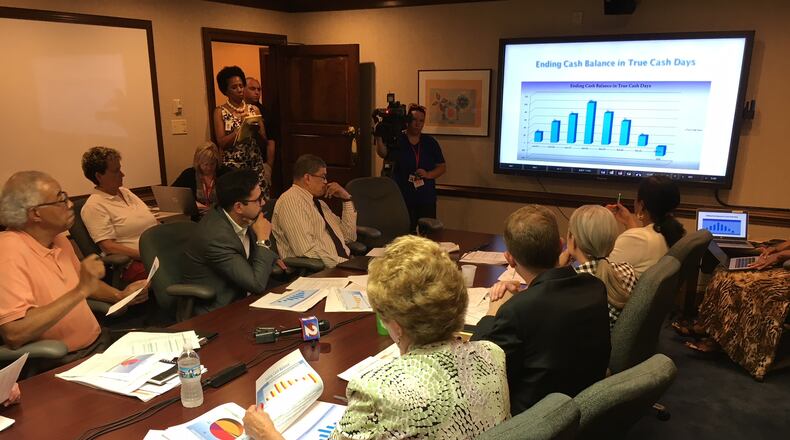RELATED: School board member says past cuts “killed our kids’ futures”
Total revenues are projected down from $288.5 million last year to $273 million this year, a $15 million decrease. The projected revenue change is largely because last year included a one-time $13 surplus from the district’s self-insurance fund.
Forecasts change as the year goes on, but the current projection would mean that after being $36.1 million in the black last year, DPS would be $14.3 million in the red for 2019-20. But the district began this year with a $114 million general fund balance, so the $14 million deficit does not trigger an emergency.
“This five-year forecast shows that our district is in good financial condition,” Abraha told the school board.
One key piece of the school board’s strategic plan has been to increase salaries for teachers in an effort to help the district recruit and retain high-quality staff. The new forecast shows total salary for all staff increasing from $91.0 million to $103.7 million this year. Accompanying benefits would rise from $35.9 million to $39.6 million.
Combined, those two changes account for $16.5 million of the district’s projected $35 million increase.
RELATED: Teams in limbo as DPS sorts out coaching policy
DPS has tried to increase the total number of staff in some areas by filling vacant educational positions. And Superintendent Elizabeth Lolli said DPS has made several efforts to make salaries more competitive, both through base salary raises and by giving catch-up increases to employees who had “step raises” frozen years ago.
The other large expenditure area in the financial forecast is “purchased services,” which is going from $106.4 million last school year to a projected $116.8 million this year.
Abraha said that $10.4 million increase includes $4 million for the district’s new high school busing program with RTA, as well as a $2 million increase in the vendor contract for substitute teachers and staff.
Abraha said that line item also reflects a significant increase in the number of students leaving DPS via open enrollment, private school vouchers or charter school enrollment. When DPS-resident students leave the district for those other schools, DPS has to transfer funding to the receiving school.
The last large chunk of the budget increase deals with facility maintenance and repairs, as Dayton Public Schools is projecting a $17 million expenditure this year on that front. About $10 million of that total will be borrowed, and does not appear in the general fund forecast. The other $7 million is reflected in the $6.9 million increase in the capital outlay line.
AUGUST: DPS launches new student attendance campaign
Abraha said DPS’ biggest budget risk is that 74% of district funding comes from state sources, which are up for review every two years in the state budget. She said that makes long-term projections difficult.
The DPS forecast projects that spending will keep increasing by 3-4% per year, but projects revenues to stay flat. If that actually happened, the district would go below its required budget reserve level in 2022-23 and run out of money in summer-fall 2023.
But Abraha called this forecast “very conservative,” and cautioned that changes are likely over months and years.
About the Author

